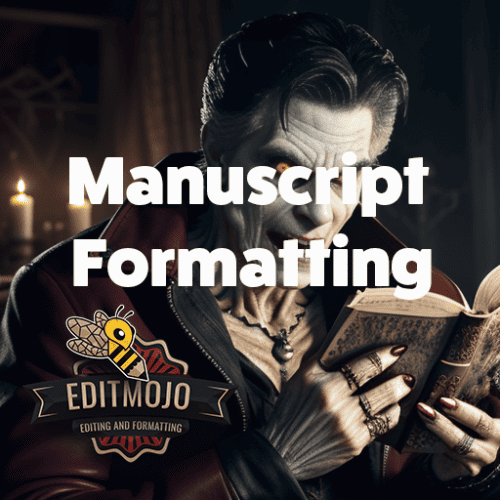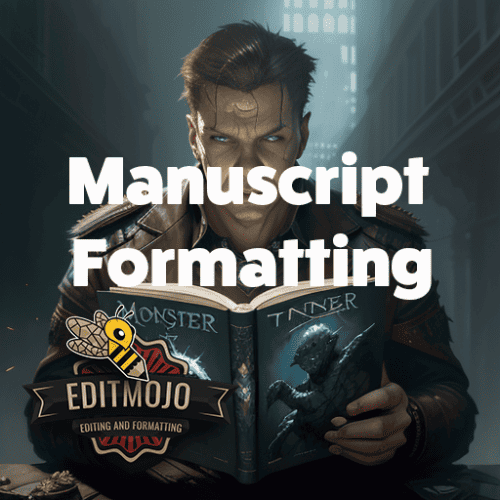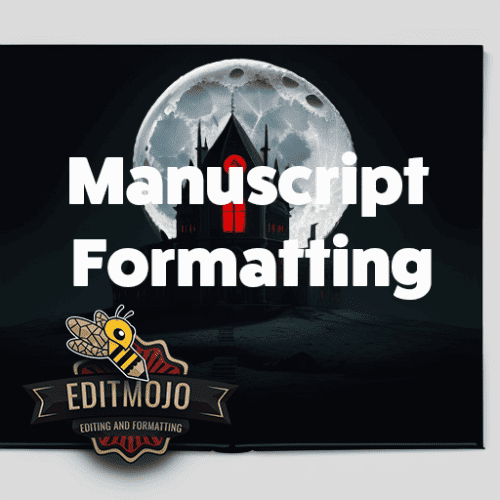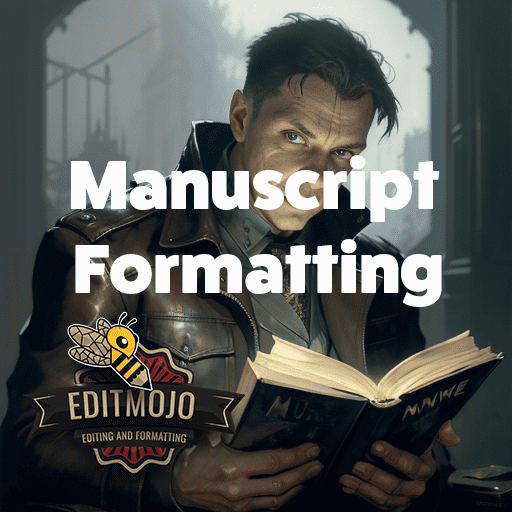Manuscript Formatting
Manuscript Formatting. Crafting a manuscript, whether academic, business, or literary, is a task that demands not only the finesse of your thoughts and ideas but also adherence to an often overlooked yet integral component—the manuscript format. Dive into the nuances of this pivotal element and elevate your manuscript from a collection of words to a finely-tuned symphony of thoughts and arguments.
| Key Takeaways |
|---|
| Manuscript formatting is a crucial element that enhances the readability and professionalism of your work. |
| Different types of manuscripts require specific formatting guidelines, whether academic, literary, or business-related. |
| Elements of manuscript formatting include title pages, abstracts, table of contents, body text, figures/tables, citations/references, appendices, and page numbers/headers/footers. |
| Consistency in formatting is essential to maintain a smooth reading experience and avoid distractions. |
| Manuscript formatting considerations differ for digital and print formats, requiring optimization for each. |
| Different style guides, such as APA, MLA, and the Chicago Manual of Style, provide guidelines for manuscript formatting. |
| Various tools and software, including word processors and specialized writing tools, can assist in manuscript formatting. |
| Common pitfalls in formatting can be avoided through careful review, adherence to guidelines, and professional assistance if needed. |
What is a Manuscript Format and Why Should We Care?
A manuscript format is a set of guidelines that dictate how your work should be presented. It covers every element of your manuscript—from the title page to the last reference. But why does it matter?
Well, a well-formatted manuscript is a joy to read. It enhances comprehension and allows readers to focus on your ideas, not your font size or margin width. Plus, it signals professionalism, displaying a dedication to your craft that extends beyond the writing itself.

Types of Manuscripts and Their Formats
Manuscripts come in various shapes and sizes, each with its formatting quirks. To understand the importance of formatting, we need to explore the different types of manuscripts.
Academic Manuscripts
These scholarly works demand strict adherence to formatting rules. The two primary types are:
Theses and Dissertations
Your thesis or dissertation is the culmination of years of research. Ensuring it’s correctly formatted according to university guidelines or established styles like APA, MLA, or Chicago, can be as crucial as the research itself.
Research Papers and Articles
For research papers, formatting is not just about aesthetics. It’s a way to structure your thoughts and arguments. Follow the formatting guidelines provided by your chosen journal to increase the chances of acceptance.
Literary Manuscripts
Unlike academic manuscripts, literary ones offer more flexibility. However, there are still guidelines to follow:

Novels and Novellas
Most publishers prefer manuscripts to be in a standard format: 12-point Times New Roman, double-spaced, with 1-inch margins. This makes the manuscript easy to read and edit. Always check the submission guidelines of your chosen publisher.
Short Stories and Poetry
These genres can be a bit more playful with their formatting. However, simplicity and readability should guide your choices. Consider the use of white space in poetry or how a short story’s structure can impact formatting.
Business Manuscripts
In the business world, crisp and clear communication is king. Manuscript formatting serves this purpose.
Reports and White Papers
These documents require clear headers, bullet points, tables, and graphs. Formatting should guide the reader’s eye and support the document’s purpose.
Proposals
Business proposals need to engage the reader immediately. A well-structured, professionally formatted proposal can make the difference between winning and losing a deal.
Elements of Manuscript Formatting
A manuscript is more than just a block of text. It is a carefully constructed document that consists of several key elements.
Title Page
The title page is the first impression of your manuscript. It should include the title, author’s name, and other relevant information. In some cases, like in APA formatting, an abstract might be required on this page.
Abstract or Synopsis
In academic manuscripts, an abstract is a concise summary of your work. In a novel, it might be a synopsis or a blurb that grabs a reader’s attention.
Table of Contents
A table of contents provides a roadmap of your manuscript. It’s crucial for lengthy works to help readers navigate through the document.
Body Text
Here’s where your voice shines. Consistency in font, size, spacing, and headers creates a smooth reading experience. Each new chapter or section should start on a new page.
Figures and Tables
Figures and tables enhance your manuscript by providing visual breaks and additional information. They should be clearly labeled and referenced in the text.
Citations and References
Citations give credit to the sources you’ve used. Incorrect citation formatting can lead to accusations of plagiarism, so it’s essential to follow the correct style.
Appendices
Additional information that doesn’t fit into the main body goes here. Appendices allow you to provide extra data without breaking the narrative flow.
Page Numbers and Headers/Footers
Never underestimate the power of page numbers in a manuscript. They provide easy navigation, particularly in printed copies. Headers and footers may include the manuscript title, chapter title, or author’s name.
Each of these elements contributes to the overall structure and readability of the manuscript. You can think of them as the spine of your work, holding everything together.

Consistency: The Key to Manuscript Formatting
Inconsistencies in manuscript formatting are like potholes on a highway—they disrupt the flow and can ruin the experience for the reader. Maintaining consistency might be time-consuming, but it’s well worth the effort.
One way to ensure consistency is by creating a style guide at the beginning of your writing process. It could include your preferences for spellings, punctuation, number formatting, and more. Regular editing and proofreading also play vital roles in maintaining consistency.
Digital vs. Print: The Battle of Formats
In today’s digital age, authors need to consider formatting for both digital and print versions of their work. Ebooks have different requirements, such as adjustable fonts, sizes, and colors. Print, on the other hand, is static.
There’s no one-size-fits-all solution here. The key is understanding the constraints and possibilities of both formats and optimizing your manuscript for each.
The Language of Styles: Formatting Guidelines
You’ve probably heard of APA, MLA, and the Chicago Manual of Style. These are styles or sets of guidelines for formatting your manuscript. They dictate everything from how you write numbers to how you structure your references.
Each of these styles has its strengths and weaknesses. For example, APA is commonly used in social sciences, while MLA is favored in the humanities. Always use the style recommended by your institution, publisher, or field of study.
Tools of the Trade: Software for Manuscript Formatting
There’s a multitude of tools out there that can help with manuscript formatting. Word processors like Microsoft Word and Google Docs are popular choices due to their wide range of features. Specialized writing and formatting tools like Scrivener and Zotero can also be beneficial, particularly for lengthy projects.
However, no tool can replace a careful, human eye. So, even if you use software to assist with formatting, it’s vital to manually review your manuscript as well.
The Pitfalls of Manuscript Formatting and How to Dodge Them
Just as there are best practices in manuscript formatting, there are also common pitfalls. These might include inconsistent headings, incorrect reference formatting, and neglecting the guidelines provided by your institution or publisher.
To avoid these, create a checklist of formatting rules at the start of your project and use it to review your manuscript regularly. Also, consider getting your manuscript professionally formatted or edited. Which leads us to…
When to Call in the Professionals
Professional formatting services can save you a lot of time and stress, particularly for lengthy or complex manuscripts. These services ensure your manuscript adheres to all the formatting rules and can make your work look polished and professional.
However, like any service, they come at a cost. Whether the investment is worth it depends on your budget, your manuscript, and your confidence in your formatting abilities.
Wrapping Up
The journey of manuscript formatting may seem long and winding, but the reward at the end is well worth it. A well-formatted manuscript not only respects your reader’s time and attention but also showcases your ideas in their best light.
So, armed with your newfound knowledge, dive back into your manuscript. And remember, the devil is in the details!
Further Resources and Reading
To delve deeper into the art of manuscript formatting, consider these resources:
- Purdue Online Writing Lab (OWL): A comprehensive guide to various styles and formatting guidelines.
- Writer’s Digest: A plethora of resources for all your writing and formatting needs.
- APA Style Blog: Expert tips and advice for mastering APA style.
- Grammar Girl: A fun and friendly guide to all things grammar and style.
- Literature & Latte’s Scrivener Forum: A great place to discuss Scrivener and other writing tools with fellow writers
Professional Editing and Formatting Services: The EditMojo Advantage
Amid a sea of professional editing services, one that consistently shines is EditMojo. Whether you’re a seasoned author or a student working on your first research paper, EditMojo’s team of experienced editors can provide the help you need to make your manuscript shine.
Their services go beyond just basic grammar and spelling checks. They dive deep into the structure and flow of your work, offering constructive feedback to enhance your writing. From line editing to comprehensive manuscript evaluation, EditMojo tailors its services to your specific needs.
Moreover, EditMojo isn’t just about editing. They’re also experts in manuscript formatting. They understand the intricacies of different formatting styles, from APA to MLA to the Chicago Manual of Style. They ensure your manuscript doesn’t just read well, but also looks professional and adheres to all necessary formatting guidelines.
Working with EditMojo, you’re not just getting an editing service, but a comprehensive partner in your writing journey. Their focus on individual projects and dedication to quality sets them apart. If you’re seeking a professional touch to enhance your manuscript, whether in terms of content or formatting, EditMojo is definitely worth considering.
| Questions | Answers |
|---|---|
| What is manuscript formatting? | Manuscript formatting refers to the guidelines and rules that govern the presentation and organization of written works. It includes aspects like font, spacing, headers, citations, and more. |
| How important is manuscript formatting? | Proper formatting is crucial as it enhances readability, signals professionalism, and helps readers navigate the content effectively. It also ensures adherence to publishing and academic standards. |
| Which style guide should I use for formatting? | The style guide to use depends on your field of study, publisher’s requirements, or personal preference. Common ones include APA, MLA, and the Chicago Manual of Style. |
| Can formatting affect the acceptance of my work? | Yes, formatting plays a role in the overall impression of your work. In academic settings, improper formatting may result in rejection, while in publishing, it can affect readability and marketability. |
| Should I consider professional formatting services? | Professional formatting services can be beneficial, particularly for complex or lengthy manuscripts. They ensure adherence to guidelines and provide a polished, consistent look to your work. |
| Resources and Further Reading |
|---|
| Purdue Online Writing Lab (OWL) |
| Writer’s Digest |
| APA Style Blog |
| Grammar Girl |
| Literature & Latte’s Scrivener Forum |
| EditMojo |
| The Chicago Manual of Style Online |
